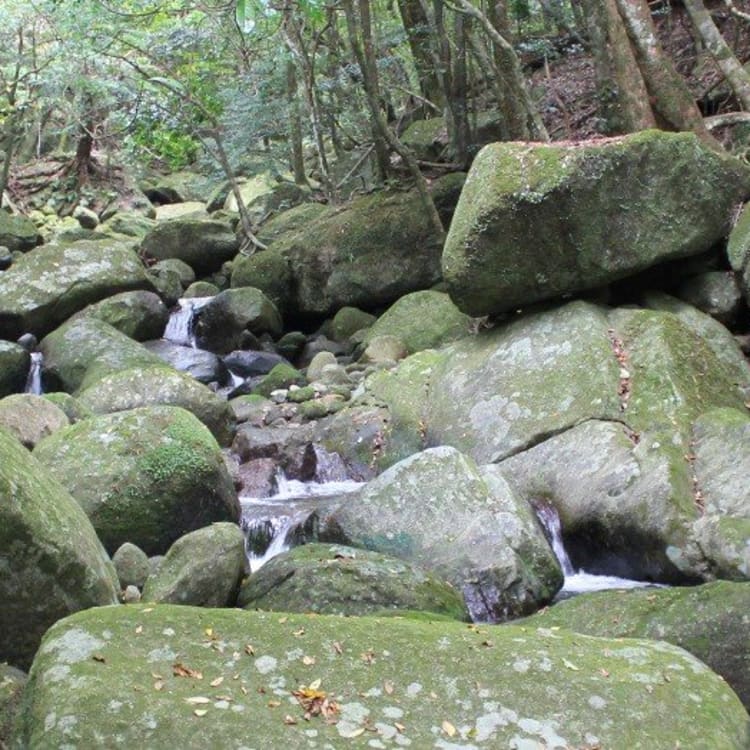
Story 3 Days in Yakushima
3 Days in Yakushima
This October, I was lucky enough to spend 3 days on Yakushima, a small, circular island 135km south of Kagoshima city. Before going, I’d heard about some of the island’s more famous attractions, like the Shiratani Unsuikyo Gorge (made famous by the Studio Ghibli animated film, ‘Princess Mononoke’) and Jomon Sugi (an ancient cedar tree). Imagine my disappointment when I heard we would not be visiting those famous sites but instead going off the beaten path to places less visited! It turned out great in the end, though.
We really lucked out with the weather. Yakushima is known to be the rainiest place in Japan, recording more than 4,000mm of rainfall on the coast and 10,000mm in the mountains each year. To put it simply, it rains twice as much in Yakushima than it does on the mainland. Autumns are generally one of the driest times of year for the island, but we were still told to come prepared with rain-gear, which we fortunately didn’t end up using.
Day 1
We flew from Tokyo to Kagoshima on Japan Airlines (JAL), around 2 hours, and then from Kagoshima to Yakushima, 40 mins, by JAC (Japan Air Commuter, owned by Japan Airlines).
Yakushima is best explored by rental car. For Aussies, this means getting an International Driving Permit (IDP) from the automobile association in your state (NRMA or equivalent). It gives you more flexibility to visit the sites as public transport is not well developed. The island’s so small, you can actually drive all the way around it (without stopping) in 3 hours. There are several rental car shops found close to Yakushima Airport.
Senpiro no taki
This impressive waterfall has a drop of 60m into a granite ravine. You can view it from an observation deck.
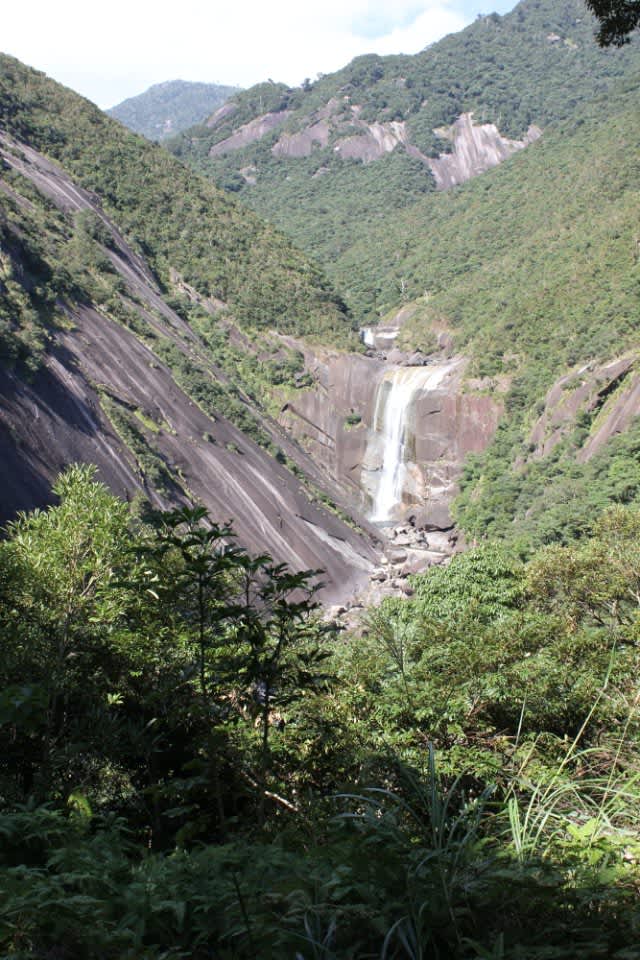
Hirauchi Kaichu Onsen
We visited Hirauchi Kaichu Onsen, a natural hot-spring that can only be visited in the two hour period before and after low tide. For 100 yen you can bathe while taking in breathtaking ocean views. Be warned though, it’s a mixed bath and you have to go in nude, so you would have to cover your bits with a towel.

When we went there wasn’t anyone there, so we took photos. We didn’t bathe, but dipped our feet into the warm water.
Fun fact: Yakushima is not volcanic, unlike some of its neighbouring islands like Tanegashima. The island was formed by a tectonic plate movement, which uplifted a subterranean piece of granite from the Kumage Strata. Even with erosion, the island grows a few centimetres every few thousand years… how cool! But for this reason there aren’t many natural hot-springs, except on the coast.
Ohko no taki
The island’s tallest waterfall, Ohko no taki, is one of the most beautiful waterfalls I’ve ever seen. It’s ranked amongst Japan’s top 100 waterfalls. The water falls from a height of 88m into a emerald green plunge pool. When we went, there were barely any tourists and you could get close enough to it to feel a cool spray – it was breathtaking.

The hotel: Yakushima Green Hotel
What a great hotel! While Miyanoura is the island’s largest city, I recommend staying in Anbo, in the eastern part of the island. It’s not far from the airport and is convenient if you wish to visit places like Yakusugi Land.
The rooms were spacious and had ocean views, there was complimentary in-room Wi-Fi (which could be quite slow at times, however) and they provide a jug of cold barley tea in the bar fridge and a small cookie, which is replenished daily. The front desk staff and dining room staff spoke English well. The hotel didn’t have an onsen, but it did have a big bath which I used both nights. The perfect way to relax after a full day of trekking!

The highlight of this hotel would have to be the meals – both dinner and breakfast were excellent and featured the island’s speciality, tobiuo (flying fish), as sashimi and deep-fried.
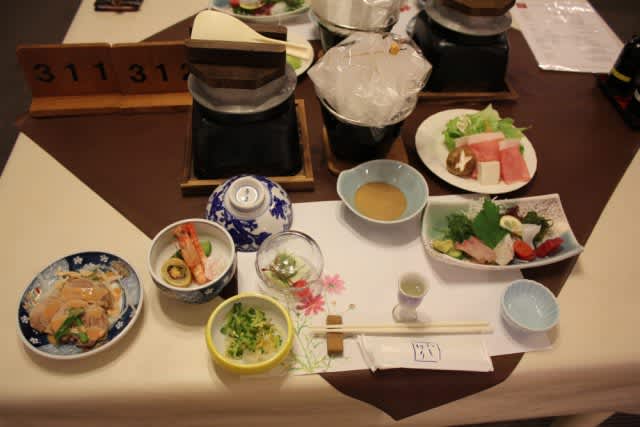

Day 2
Yakusugi Land
When I first heard we were visiting a place called ‘Yakusugi Land’, I was a bit disappointed. The name sounds like an artificial theme park. I couldn’t have been more wrong about it!
Yakusugi Land is actually a nature reserve located at an altitude of 1,000m. It’s free to enter, or you can make a recommended donation of 500 yen which goes directly towards a Forest Environment Enhancement Promotion fund. It also comes with a 200 yen discounted entry coupon to Shiratani Unsuikyo Gorge (which I sadly did not use). On the way to Yakusugi Land we saw some deer and monkeys.
The deer are absolutely beautiful, straight out of Bambi. Smaller than their Honshu counterparts, they look cuter than the huge ones I saw in Shiretoko, Hokkaido.

Monkeys on Yakushima are hairier than their Honshu counterparts, I’m told, to protect themselves from the rain. It was the breeding season, so we were told not to look the male monkeys in the eyes… as they can be extra aggressive at this time.


At Yakusugi Land there are several trekking courses for different abilities, ranging from 30 mins to 150 mins. We did the 150 min course, which was quite advanced and involved climbing up some pretty steep steps and over tree roots in parts. Be warned, once you’re on the trail there are no toilets, so you need to bring your own (disposable toilets) and use them in the designated areas.

We saw several yakusugi cedar trees along the way. Yakusugi trees are those older than 1,000 years. Anything younger is known as kosugi.
Yakushima has a rather sad history. A great number of the ancient cedar trees were cut down to pay taxes during the Edo period (1603 and 1868). The island’s climate wasn’t suited to rice production (the usual form of tax payment to the government), so they paid by making roofing tiles out of the cedar trees. Yakushima cedars are rich in oil and resistant to water and rot. The yakusugi that remain today were spared because they were too twisted to be used as roofing tiles. Evidence of test cuts on their trunks is still evident today.

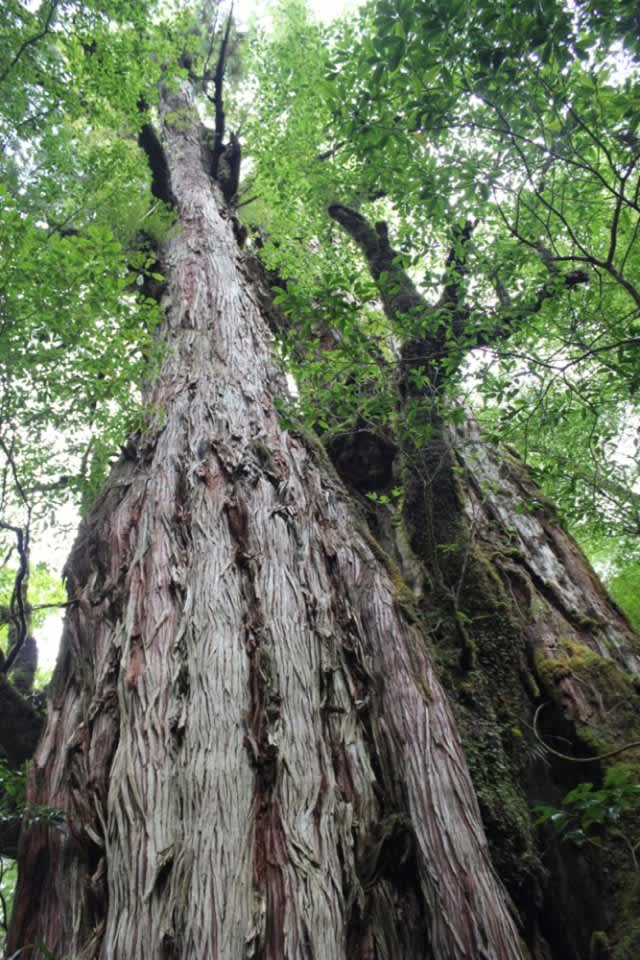

One of the highlights was taking a snack break by the Arakawa River. The water there is so clean that you can drink it straight out of the river. So clean, that fish can’t live there. Because Yakushima island is made of granite, there isn’t much soil. Water that flows down from the mountains doesn’t soak through granite, so the water tastes soft (no minerals).

So how does a forest grow without soil? Good question! The answer is moss. You can see moss growing on rocks and on old tree stumps and cedar trees growing out of the moss.

Our guide for Yakusugi Land
Our guide for Yakusugi Land was Mizuha Higashi of Guide Office Sangaku Taro (website in Japanese only). She kept saying her English was bad but it truly wasn’t! She really took care of us on the day and taught us so many fascinating things about the forest. I couldn’t recommend Mizuha more.
Day 3
Yoggo Valley
Northwest of the island is Yoggo Valley, a natural swimming pool, complete with waterslides! It’s popular with locals, but visitors are told to be aware of flash flooding which can occur when it rains high up in the mountains. Also, there can be whirlpool currents underwater that could drag you under. I really wanted to jump in, it was so beautiful!
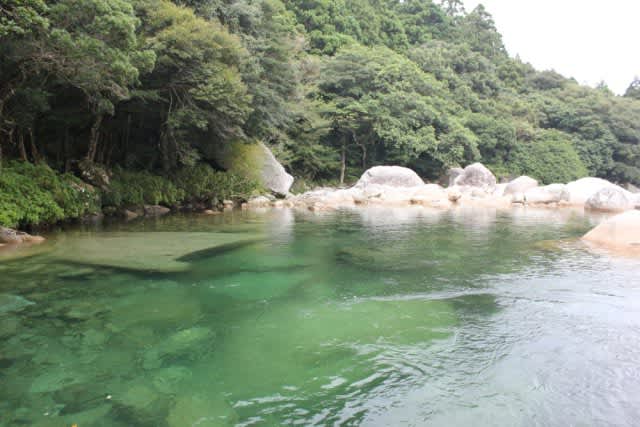
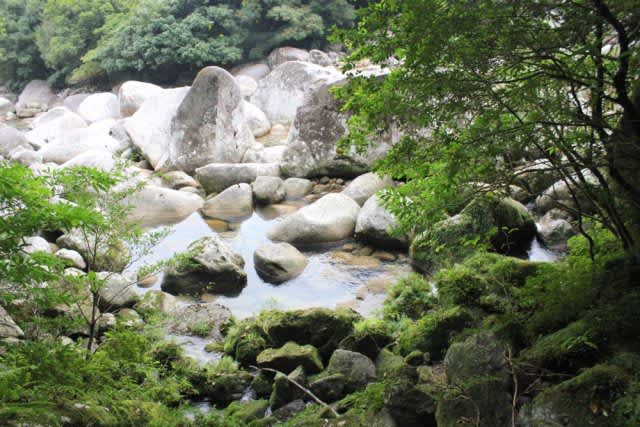
Nagata Inakahama Beach
This beach is a well-known nesting site of loggerhead turtles between May and July. Unfortunately we went at the wrong time of year, but on a clear day you can see Kuchinoerabu Island, which is said to resemble a sleeping Totoro (or Moomin). What do you think?

Seibu Rindo Forest Path
Like most other tourists, I thought the whole of Yakushima was World Heritage listed, but in fact only about 20% of the island is. The World Heritage zone doesn’t even include popular sights like Shiratani Unsuikyo Gorge or Jomon Sugi!
Driving towards Seibu Rindo on western Yakushima and into the World Heritage zone, we saw more monkeys and deer.
I thought we’d already seen the most beautiful part of Yakushima, but I was wrong. Seibu Rindo was by far the best. Here, there are no trails so you can’t go into the forest without a guide. You would certainly get lost.
The trekking was fairly intense, but on the way we saw some beautiful Banyan trees and deer. You have to listen for the snapping of twigs as the deer are well camouflaged. The forest here is quite unique, ranging from sub-tropical on the coastal areas to sub-arctic high in the mountains. This vertical distribution of vegetation is one of the main reasons Yakushima is so special and became Japan’s first UNESCO World Heritage listed natural site in 1993.

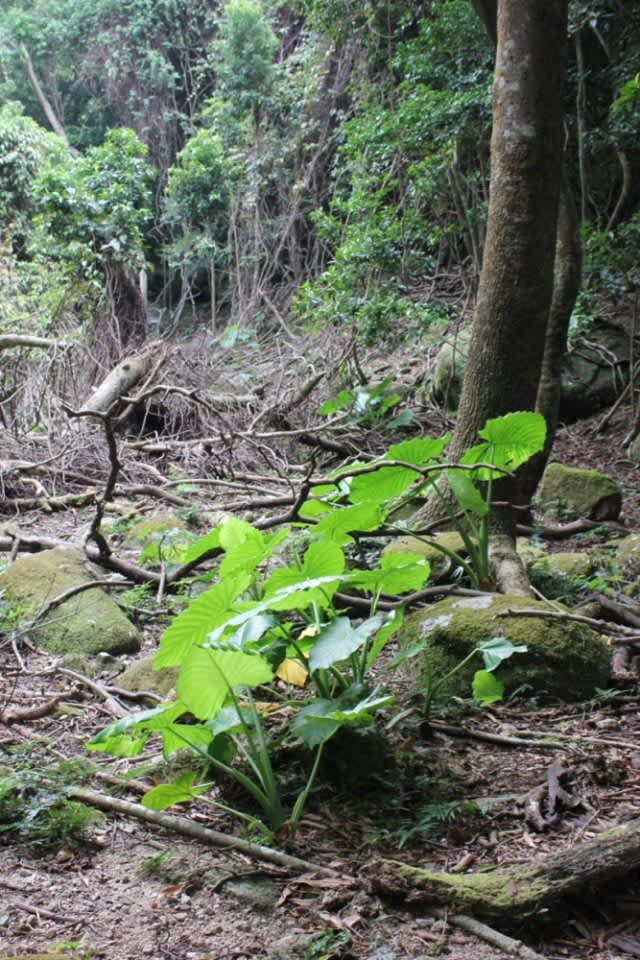
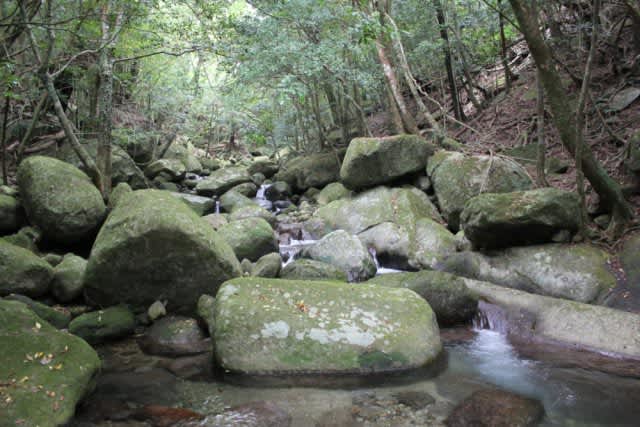
Amazingly, there are no mosquitoes in the forest. I am a mosquito magnet and I didn’t get a single bite. We did see plenty of these little guys though, nicknamed ‘Kamaji’ after the character from ‘Spirited Away’. They look like spiders but they’re little blind insects, harmless to humans.

Our guide asked us to climb a cliff face (seriously) and I was terrified at first. I imagined the news headlines – Aussie tourist falls from clifftop, body dashed on the rocks. The view from the top was totally worth it though:

Our guide for Seibu Rindo
Our guide for Seibu Rindo was Nao Takada of Moritabi.com. She’s full of energy and speaks English fluently as she lived abroad in the USA.
In conclusion
I fell in love with Yakushima; it was my first visit but certainly not my last. There’s nothing quite as meditative as walking through a tranquil forest while listening to the sound of a gushing river. It’s not hard to see why so many of the people that live there have moved from larger cities.
I’ve heard they’re in need of more English speakers there as tourism to the region grows. I’m seriously considering buying a house and moving there!
Words and images by Stephanie Sng, JNTO Sydney Office staff.



















































